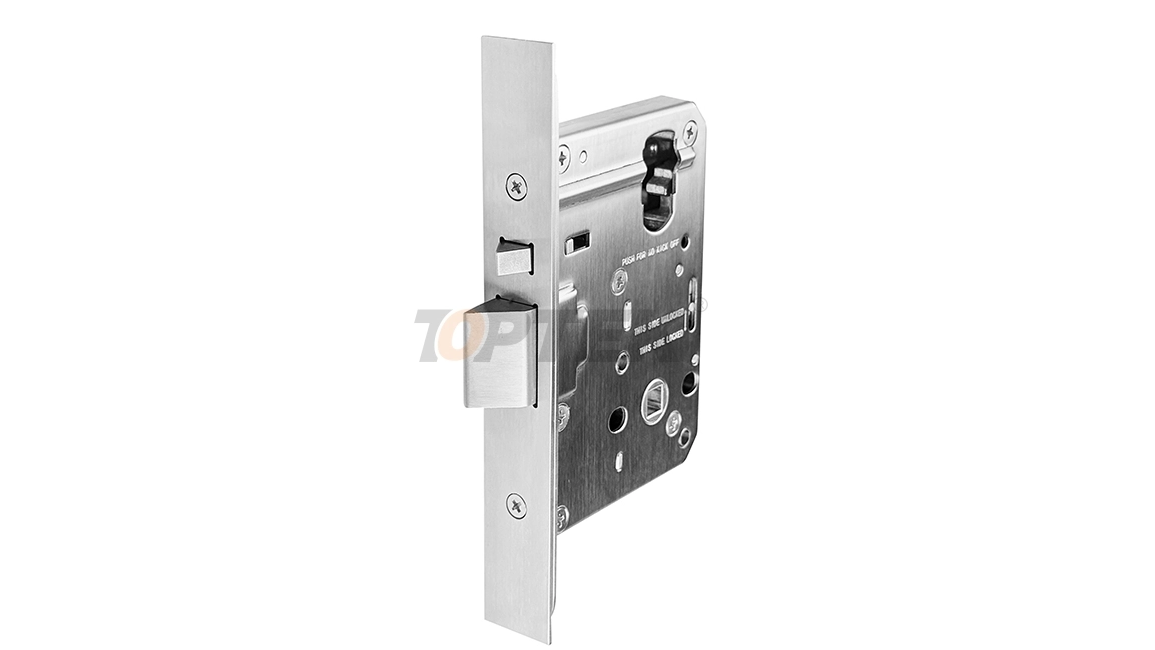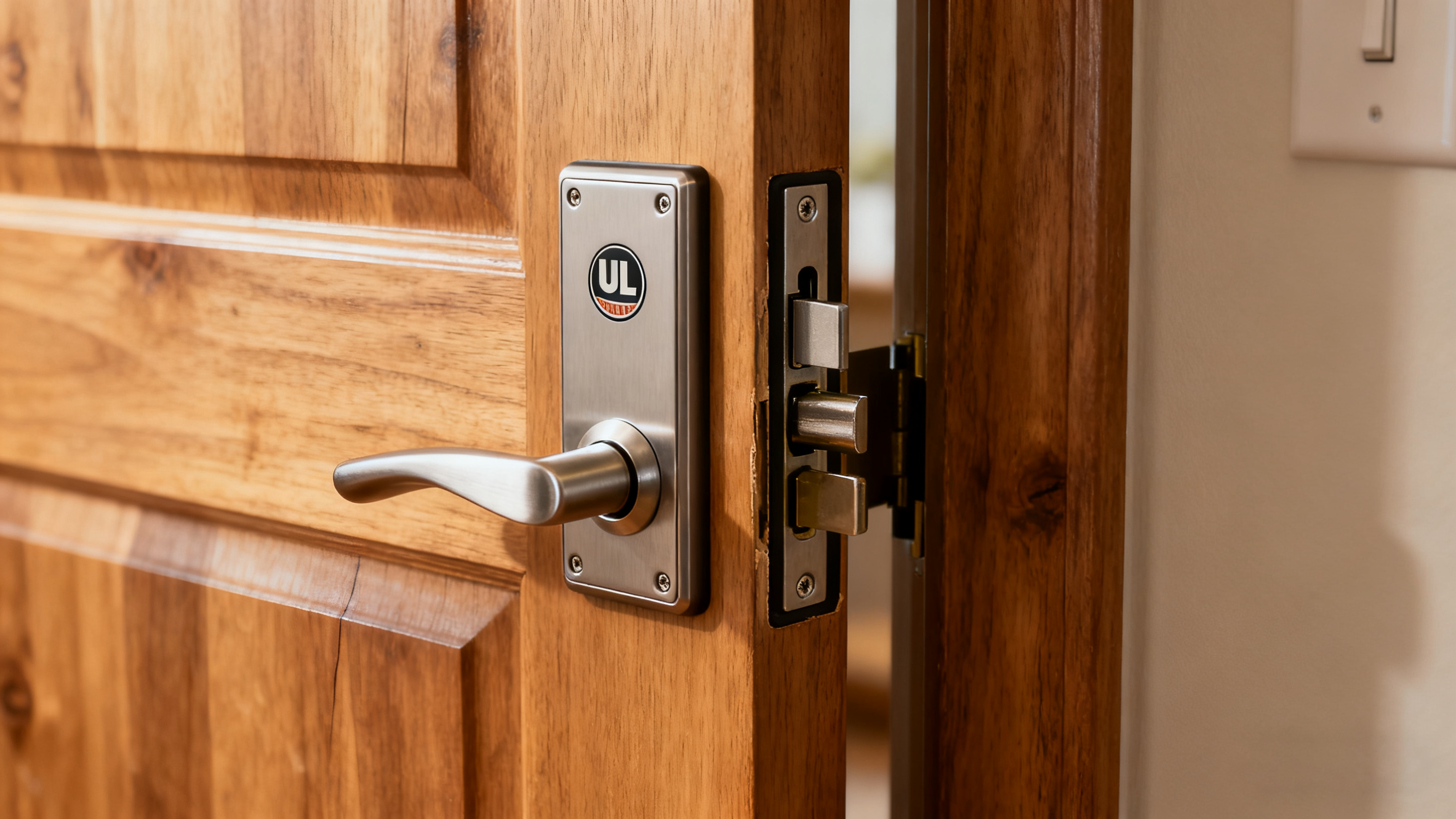Understanding mortise lock grading can feel overwhelming when you're choosing security hardware for your property. Whether you're a building manager, architect, or property owner, knowing these classifications helps ensure you select locks that meet both your security needs and regulatory requirements.
Mortise locks are graded using standardized systems that evaluate their durability, security features, and performance under various conditions. The most widely recognized grading system comes from the American National Standards Institute (ANSI) and the Builders Hardware Manufacturers Association (BHMA), which classify mortise locks into three distinct grades based on rigorous testing protocols.
This guide breaks down everything you need to know about mortise lock grades, helping you make informed decisions about your security investments. You'll learn what each grade means, how testing works, and which applications suit each classification level.
Understanding ANSI/BHMA Grading Standards
The ANSI/BHMA grading system serves as the industry benchmark for evaluating mortise locks in North America. These standards test locks across multiple performance criteria including cycle testing, door preparation, strength requirements, and security features.
Testing procedures simulate real-world usage patterns through thousands of operational cycles. Locks undergo door slam tests, torque resistance evaluations, and impact assessments to determine their grade classification. The system also evaluates key control features, finish durability, and resistance to environmental factors.
UL certified mortise locks often incorporate these ANSI/BHMA standards into their certification process, providing additional validation of quality and performance. This dual certification approach gives specifiers confidence in their hardware selections.

Grade 1 Mortise Locks: Heavy-Duty Commercial
Grade 1 represents the highest performance level for mortise locks, designed for heavy-duty commercial applications where security and durability are paramount. These locks undergo the most rigorous testing protocols and must demonstrate exceptional longevity under demanding conditions.
Performance Requirements
Grade 1 mortise locks must withstand 2 million operational cycles during testing, simulating decades of heavy use in commercial environments. They resist 450 inch-pounds of torque on the lever and 300 inch-pounds on the cylinder, ensuring they won't fail under forced entry attempts.
Door slam testing requires these locks to function properly after 400,000 impacts, while strength testing evaluates their ability to withstand 800 pounds of perpendicular force and 450 pounds of end load without failure.
Typical Applications
High-security commercial buildings, government facilities, hospitals, schools, and retail establishments commonly specify Grade 1 mortise locks. These environments demand reliable performance under constant use while maintaining consistent security levels.
Office buildings with heavy foot traffic, emergency exit doors, and areas requiring strict access control benefit from Grade 1 specifications. The enhanced durability justifies higher initial costs through reduced maintenance and replacement expenses over the lock's lifespan.
Grade 2 Mortise Locks: Standard Commercial
Grade 2 mortise locks provide reliable performance for standard commercial applications where moderate to heavy use is expected. These locks offer a balance between performance capabilities and cost considerations, making them popular choices for many commercial projects.
Performance Standards
Testing requirements for Grade 2 locks include 800,000 operational cycles, demonstrating their suitability for regular commercial use patterns. Torque resistance specifications call for 360 inch-pounds on the lever and 240 inch-pounds on the cylinder.
Door slam testing involves 200,000 impacts, while strength requirements include resistance to 640 pounds of perpendicular force and 360 pounds of end load. These specifications ensure adequate performance for most commercial security applications.
Common Uses
Small to medium commercial buildings, professional offices, retail stores, and apartment buildings frequently utilize Grade 2 mortise locks. These applications require dependable security without the extreme durability demands of high-traffic facilities.
Educational facilities, healthcare offices, and mixed-use developments often specify Grade 2 locks for interior doors and secondary access points. The performance level suits environments with moderate security requirements and controlled access patterns.
Grade 3 Mortise Locks: Light Commercial and Residential
Grade 3 mortise locks serve light commercial and residential applications where basic security and moderate durability meet typical usage patterns. While less robust than higher grades, these locks provide adequate performance for appropriate applications.
Testing Specifications
Grade 3 locks must complete 400,000 operational cycles during testing, suitable for lower-traffic environments. Torque resistance requirements include 270 inch-pounds on the lever and 180 inch-pounds on the cylinder.
Door slam testing involves 100,000 impacts, with strength requirements including 480 pounds of perpendicular force resistance and 270 pounds of end load tolerance. These specifications ensure basic security functionality for intended applications.
Appropriate Applications
Residential buildings, small offices, storage areas, and low-traffic commercial spaces commonly use Grade 3 mortise locks. These environments typically experience lighter usage patterns and have less demanding security requirements.
Apartment units, small retail shops, and office suites in smaller buildings represent typical Grade 3 applications. The lower cost makes these locks attractive for projects with limited budgets while still providing adequate security for their intended use.
UL Certification and Additional Standards
UL certified mortise locks undergo additional testing beyond basic ANSI/BHMA requirements, providing enhanced validation of security and fire safety performance. This certification process evaluates locks under various environmental conditions and security scenarios.
Fire testing ensures locks maintain functionality during fire conditions, allowing emergency egress while preventing smoke and flame passage. Security testing evaluates resistance to various attack methods including drilling, cutting, and manipulation attempts.
Environmental testing subjects UL certified mortise locks to temperature extremes, humidity variations, and corrosive conditions. This comprehensive evaluation ensures consistent performance across diverse installation environments and climate conditions.
Choosing the Right Grade for Your Application
Selecting appropriate mortise lock grades requires careful consideration of usage patterns, security requirements, and budget constraints. High-traffic areas with demanding security needs justify Grade 1 specifications, while lower-traffic spaces may perform adequately with Grade 2 or 3 locks.
Consider future usage patterns when specifying lock grades. Buildings designed for potential expansion or changing occupancy types benefit from higher-grade specifications that accommodate increased demands over time.
Budget considerations must balance initial costs against long-term performance expectations. Higher-grade locks typically cost more initially but provide better value through reduced maintenance and replacement needs over their service life.

Installation and Maintenance Considerations
Proper installation practices significantly impact mortise lock performance regardless of grade level. Professional installation ensures alignment, proper fit, and optimal functionality throughout the lock's service life.
Regular maintenance schedules help preserve lock performance and extend service life. Higher-grade locks typically require less frequent maintenance due to their enhanced durability, but all grades benefit from periodic inspection and lubrication.
Environmental factors influence maintenance requirements and lock selection. Coastal areas with salt air exposure, industrial environments with airborne contaminants, and extreme climate conditions may require upgraded specifications or enhanced maintenance programs.
Making the Right Security Investment
Understanding mortise lock grades empowers you to make informed decisions that balance security requirements, durability expectations, and budget considerations. Grade 1 locks provide maximum security and longevity for demanding applications, while Grade 2 and 3 options serve appropriate applications at lower cost points.
Consider consulting with security professionals or hardware specialists when specifying mortise locks for critical applications. Their expertise helps ensure proper grade selection and integration with overall security systems.
Research UL certified mortise lock options when enhanced security validation is important. This additional certification provides confidence in lock performance and may satisfy specific regulatory or insurance requirements for your facility.
Mortise Locks
UL certified mortise lock
UL-rated lock
English
العربية
Français
Русский
Español
Português
Deutsch
italiano
日本語
한국어
Nederlands
Tiếng Việt
ไทย
Polski
Türkçe
አማርኛ
ພາສາລາວ
ភាសាខ្មែរ
Bahasa Melayu
ဗမာစာ
தமிழ்
Filipino
Bahasa Indonesia
magyar
Română
Čeština
Монгол
қазақ
Српски
हिन्दी
فارسی
Kiswahili
Slovenčina
Slovenščina
Norsk
Svenska
українська
Ελληνικά
Suomi
Հայերեն
עברית
Latine
Dansk
اردو
Shqip
বাংলা
Hrvatski
Afrikaans
Gaeilge
Eesti keel
Māori
සිංහල
नेपाली
Oʻzbekcha
latviešu
অসমীয়া
Aymara
Azərbaycan dili
Bamanankan
Euskara
Беларуская мова
भोजपुरी
Bosanski
Български
Català
Cebuano
Corsu
ދިވެހި
डोग्रिड ने दी
Esperanto
Eʋegbe
Frysk
Galego
ქართული
guarani
ગુજરાતી
Kreyòl ayisyen
Hausa
ʻŌlelo Hawaiʻi
Hmoob
íslenska
Igbo
Ilocano
Basa Jawa
ಕನ್ನಡ
Kinyarwanda
गोंगेन हें नांव
Krio we dɛn kɔl Krio
Kurdî
Kurdî
Кыргызча
Lingala
Lietuvių
Oluganda
Lëtzebuergesch
Македонски
मैथिली
Malagasy
മലയാളം
Malti
मराठी
ꯃꯦꯇꯥꯏ (ꯃꯅꯤꯄꯨꯔꯤ) ꯴.
Mizo tawng
Chichewa
ଓଡ଼ିଆ
Afaan Oromoo
پښتو
ਪੰਜਾਬੀ
Runasimi
Gagana Samoa
संस्कृत
Gaelo Albannach
Sepeti
Sesotho
chiShona
سنڌي
Soomaali
Basa Sunda
Wikang Tagalog
Тоҷикӣ
Татарча
తెలుగు
ትግንያውያን
Xitsonga
Türkmençe
संस्कृत
ئۇيغۇرچە
Cymraeg
isiXhosa
ייִדיש
Yorùbá
isiZulu






































